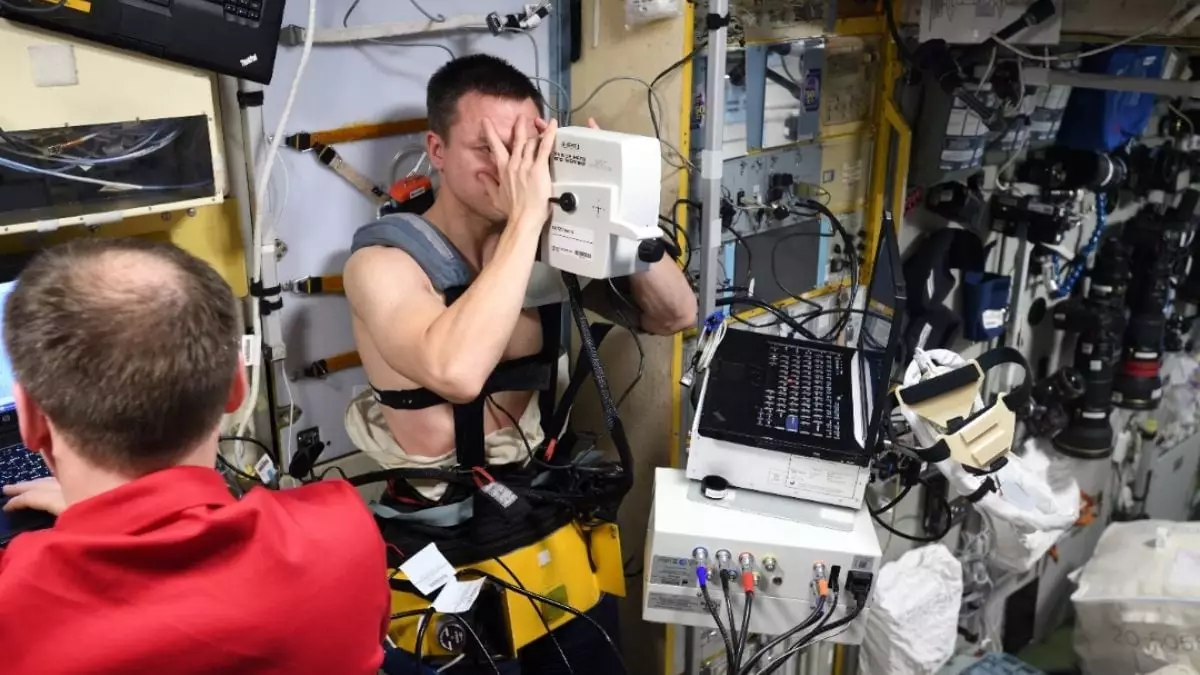As humanity sets its sights on deeper space exploration, one pressing concern continues to emerge: the effects of prolonged microgravity on astronauts’ vision. Recent findings indicate that around 70 percent of astronauts who have spent extended stints aboard the International Space Station (ISS)—typically ranging from six to twelve months—experience notable changes to their eyesight. These changes are linked to a condition known as spaceflight-associated neuro-ocular syndrome (SANS), characterized by a plethora of symptoms including swelling of the optic nerve and flattening of the eye’s posterior segment. As space agencies prepare for ambitious missions beyond the protective confines of low Earth orbit, addressing these vision alterations is critical to the success and safety of future endeavors.
The Mechanisms Behind Vision Changes
The root cause of SANS appears to be the body’s response to microgravity, particularly the redistribution of bodily fluids that occurs in this unique environment. When the usual gravitational forces diminish, fluids that typically pool in the lower body start to shift towards the head, leading to increased pressure on the ocular systems. The condition has been observed for over two decades, first noted in Russian cosmonauts aboard the Mir space station. To date, NASA has classified SANS officially in 2011, but the precise mechanisms that trigger this syndrome remain an area of intensive research focus.
A comprehensive study led by Santiago Costantino from the Université de Montréal probed the ocular health of astronauts post-mission. By examining 13 individuals who spent five to six months on the ISS, researchers discovered concerning shifts in various eye metrics: a 33 percent decrease in ocular rigidity, along with an 11 percent drop in intraocular pressure and a 25 percent reduction in ocular pulse amplitude. These findings highlight the acute physiological adjustments the eye undergoes in space and underline the necessity for effective monitoring.
Countermeasures and Future Directions
In light of these findings, space agencies have begun actively exploring methods to mitigate these ocular challenges. Proposed countermeasures include the use of negative pressure devices, specific pharmaceutical interventions, and tailored nutritional plans designed to support astronaut health. Additionally, ongoing studies aim to identify astronauts most susceptible to severe ocular complications in a bid to optimize screening and preventative strategies.
Interestingly, some researchers, like Costantino, suggest that alterations in the mechanical properties of the eye itself could serve as predictive biomarkers for SANS, paving the way for early intervention and potentially reducing long-term risks associated with prolonged spaceflight. As humanity looks toward potential missions to Mars and beyond, safeguarding astronaut eyesight has become a pivotal aspect of mission planning.
As we venture into uncharted space territories, the health of astronauts remains an indispensable focus. The link between microgravity and vision changes paints a complicated picture of the challenges posed by extended space travel. Nonetheless, proactive research and innovative countermeasures offer a hopeful outlook as we strive to protect astronaut health and ensure mission success in the quest to push the boundaries of human exploration. Addressing the complexities of SANS will be paramount not just for eye care but also for the overall well-being and performance of astronauts as they embark on future journeys through the cosmos.

Leave a Reply